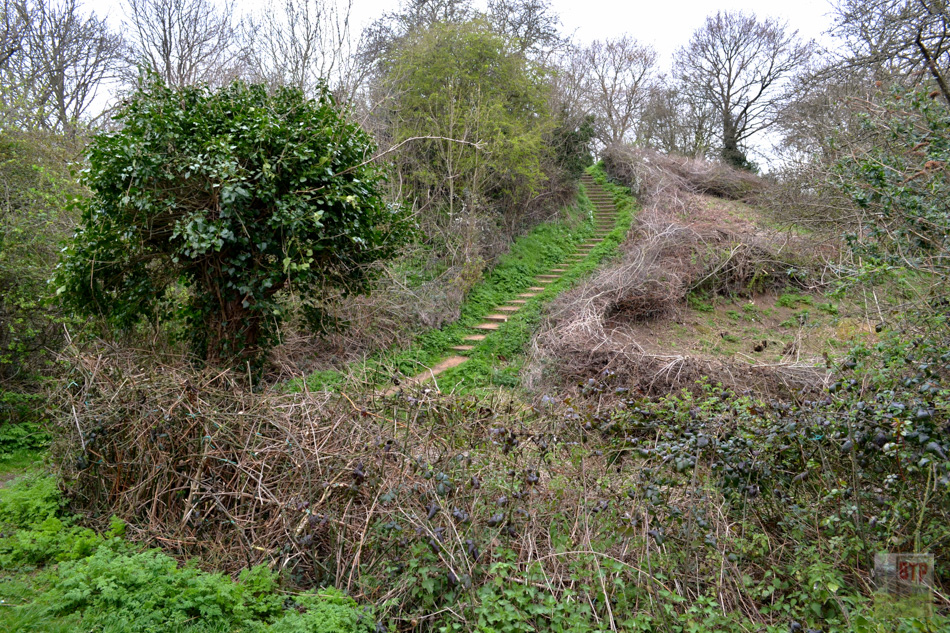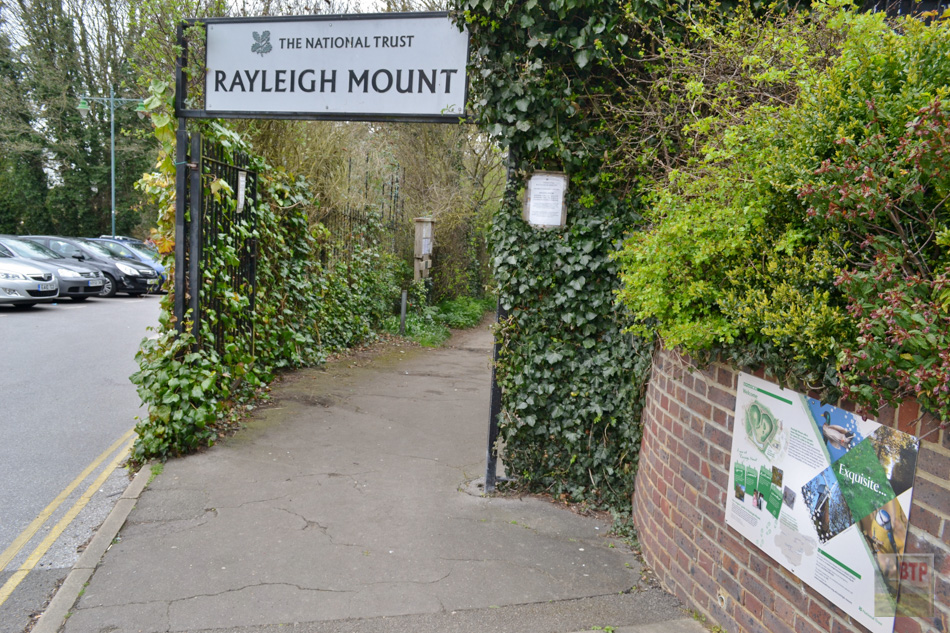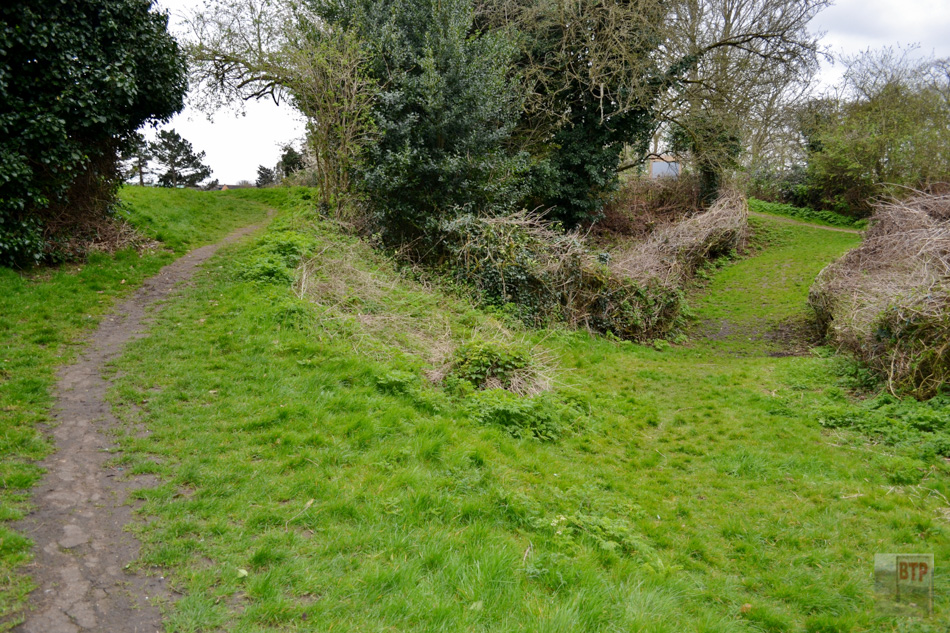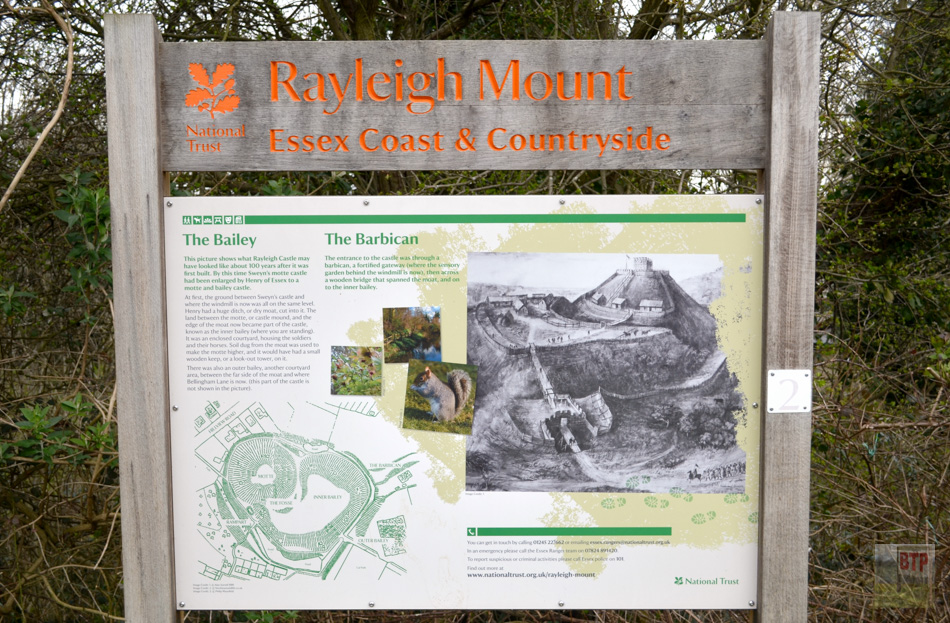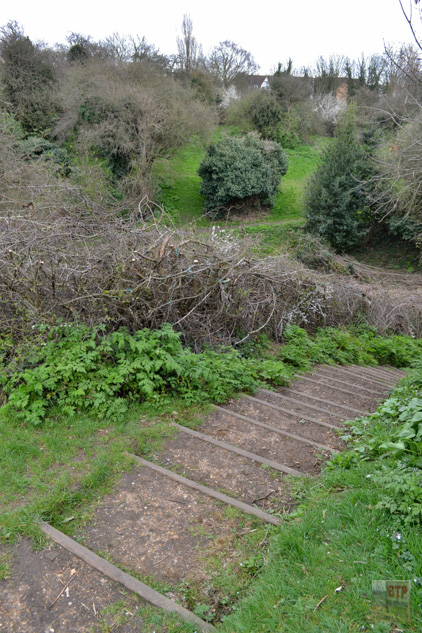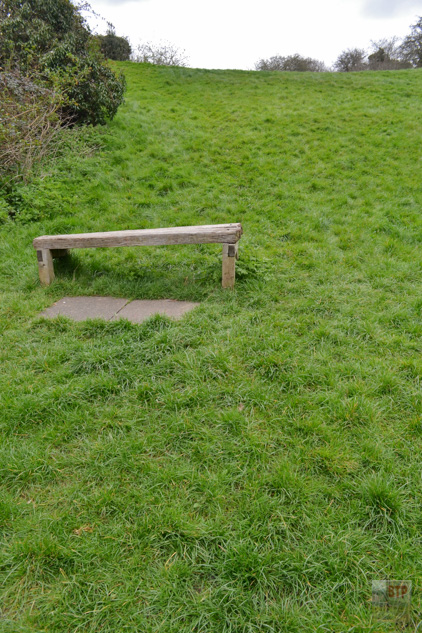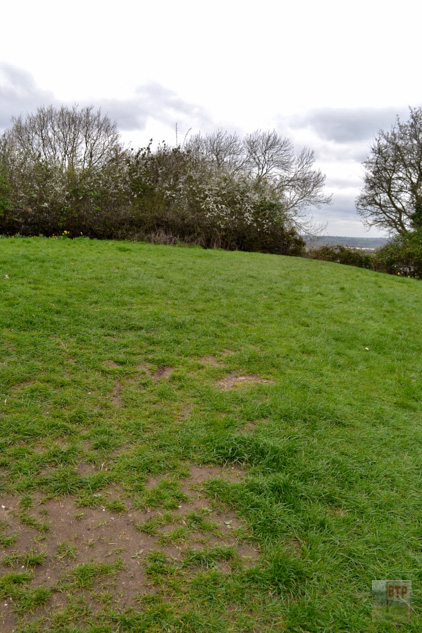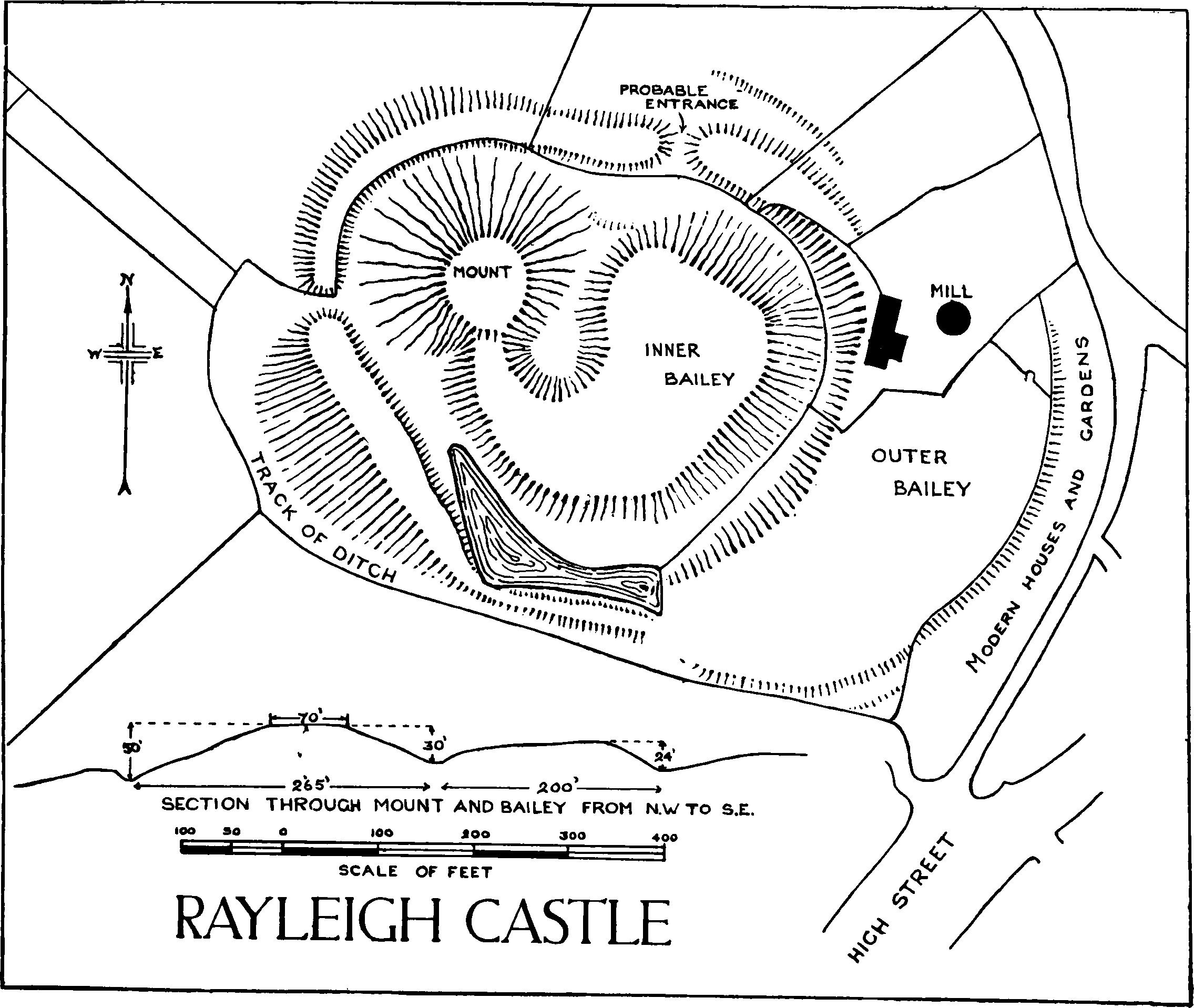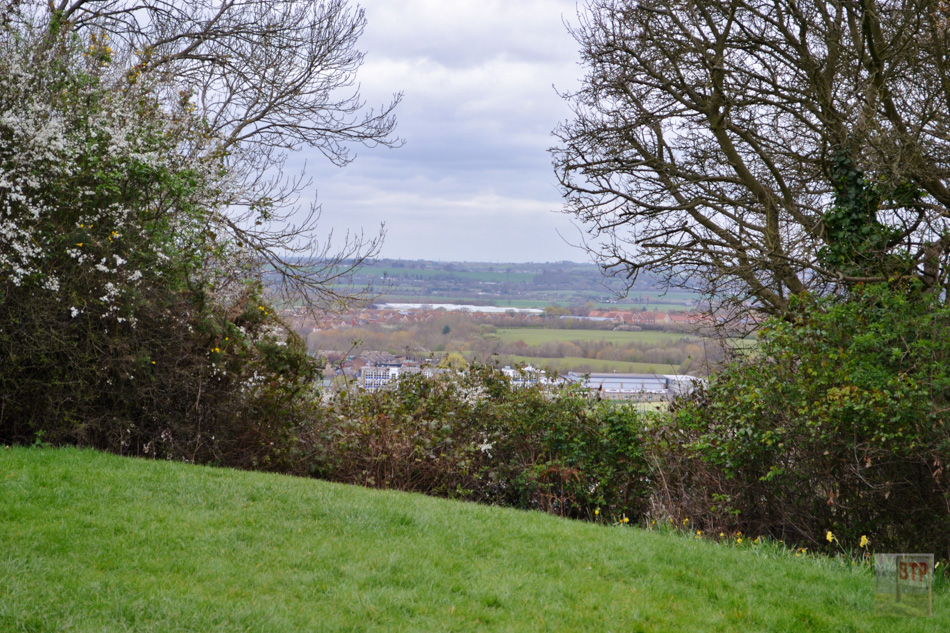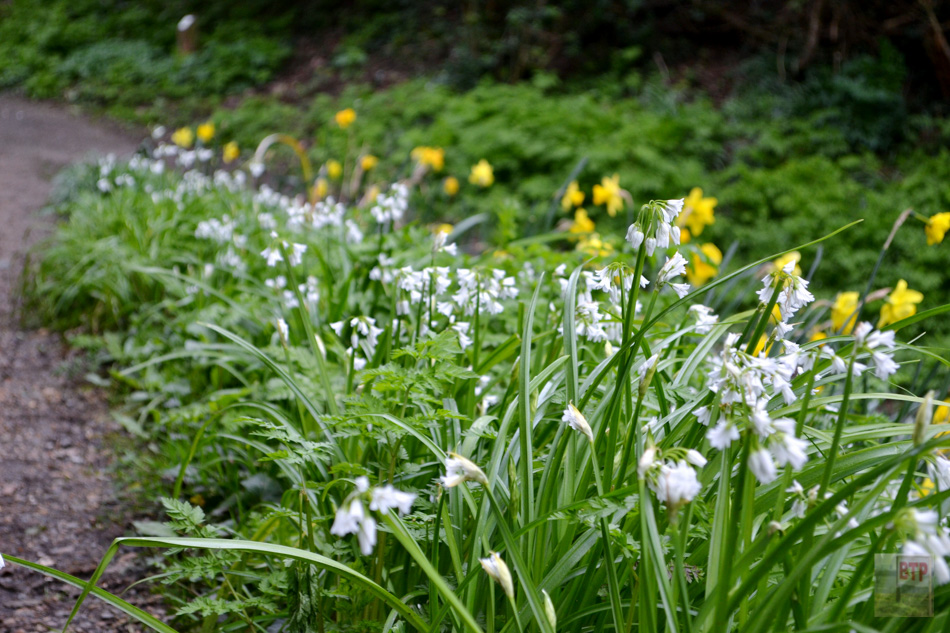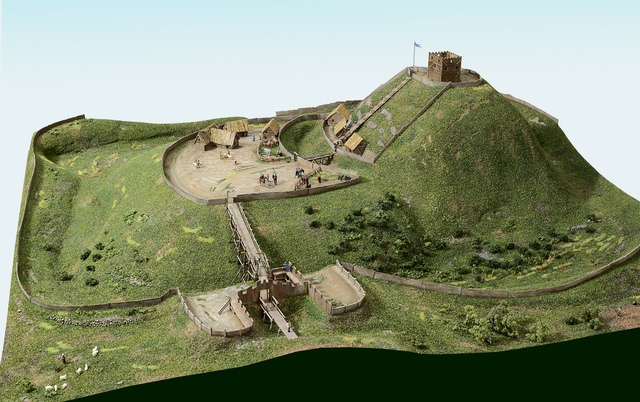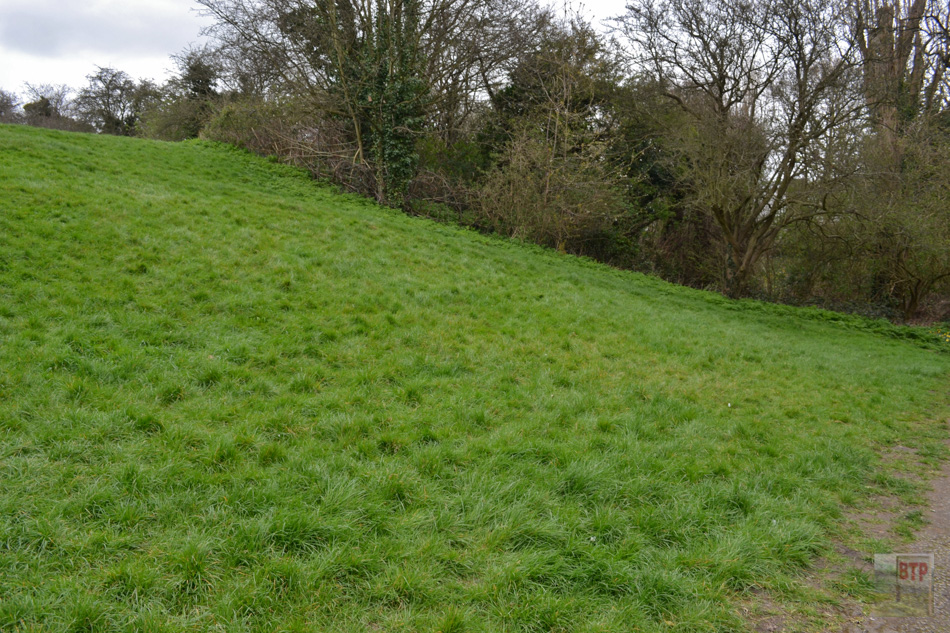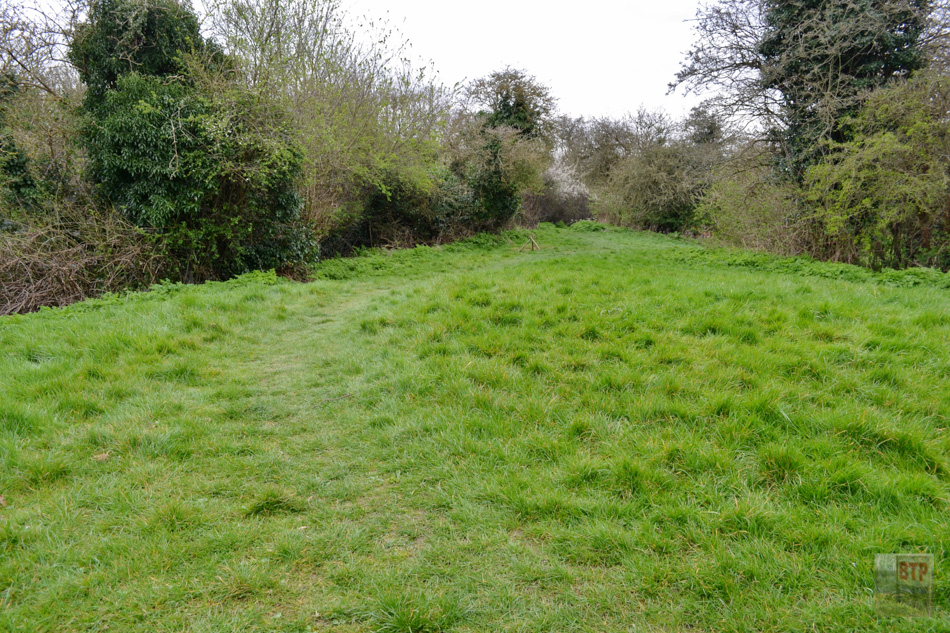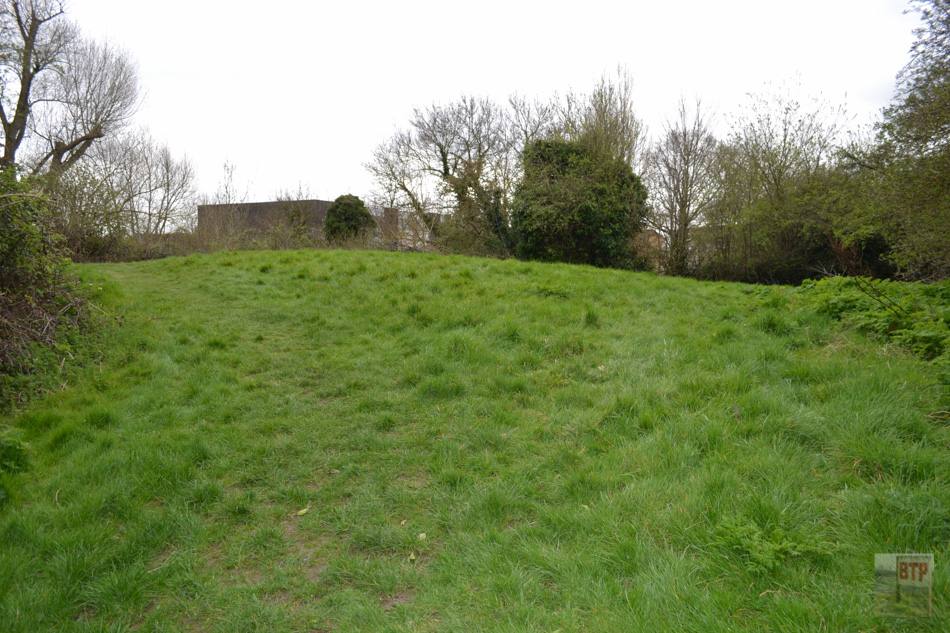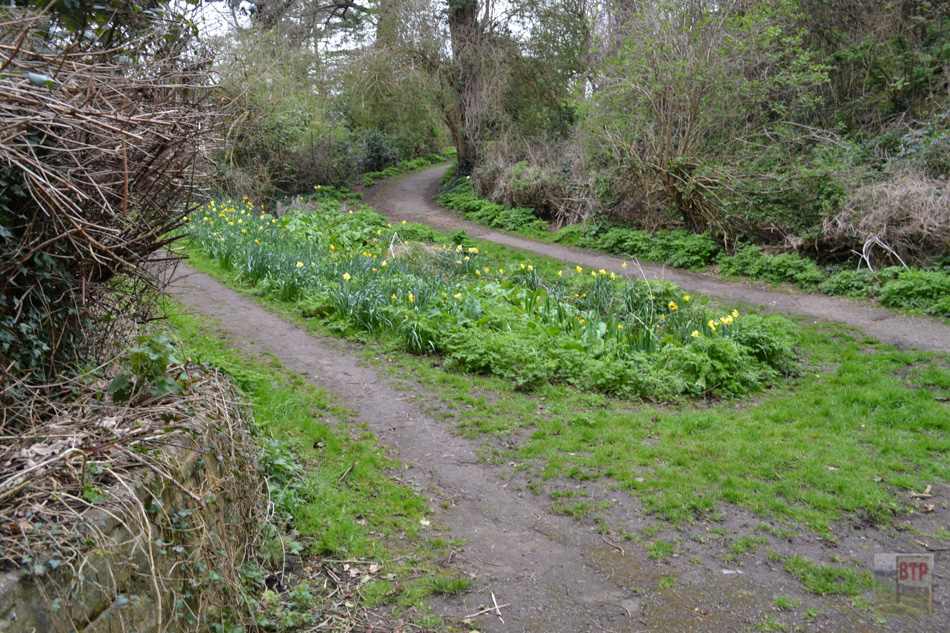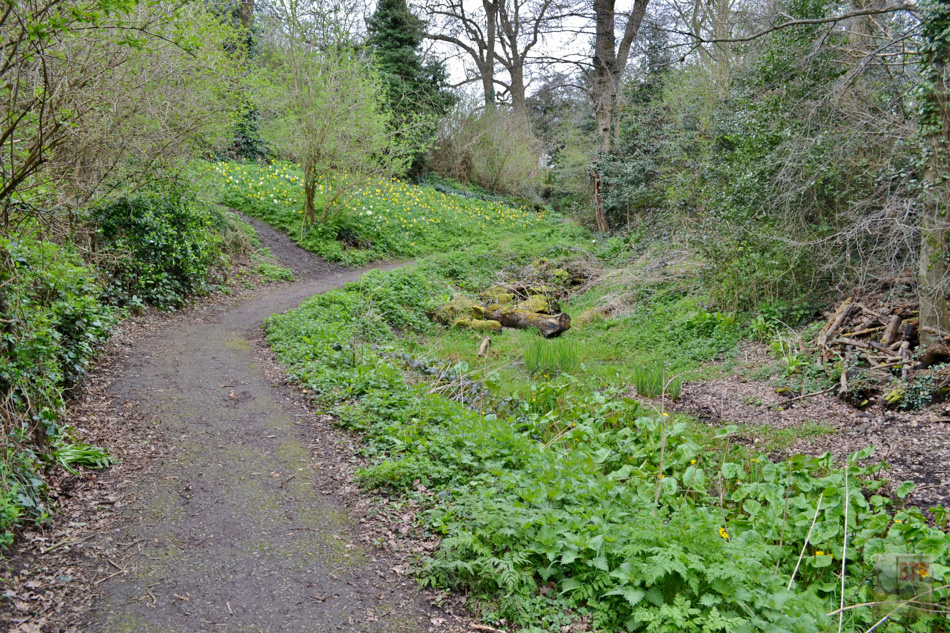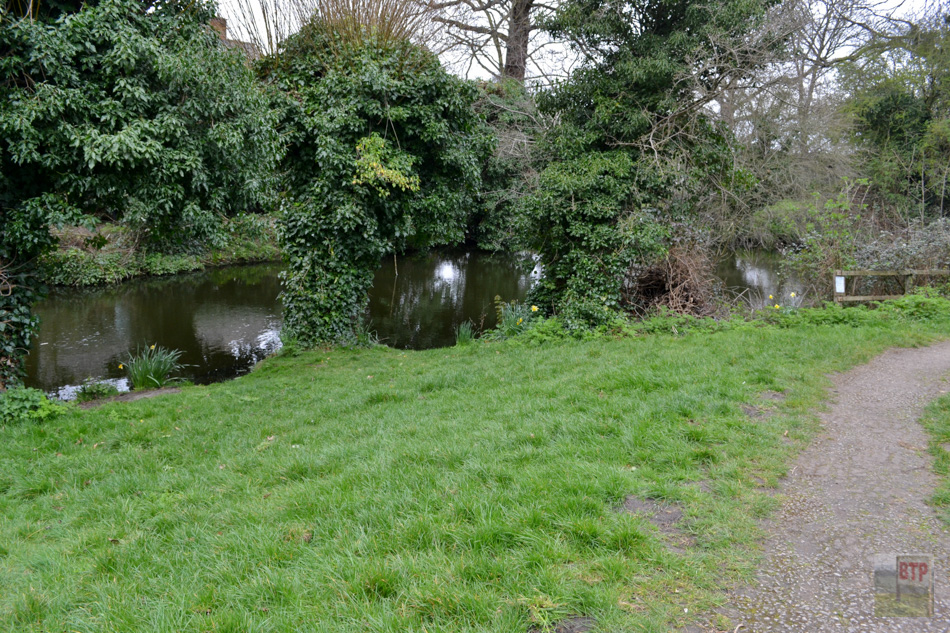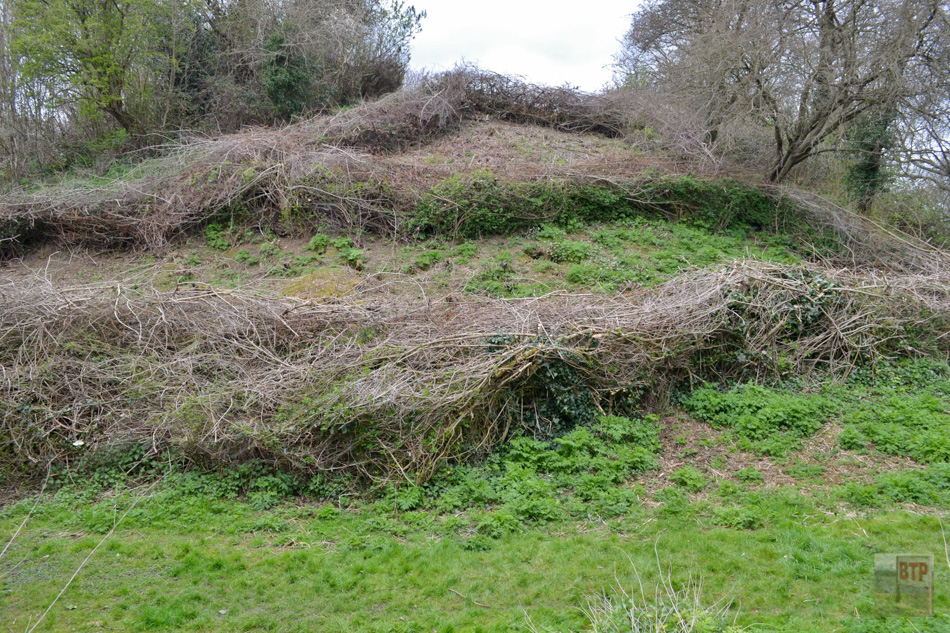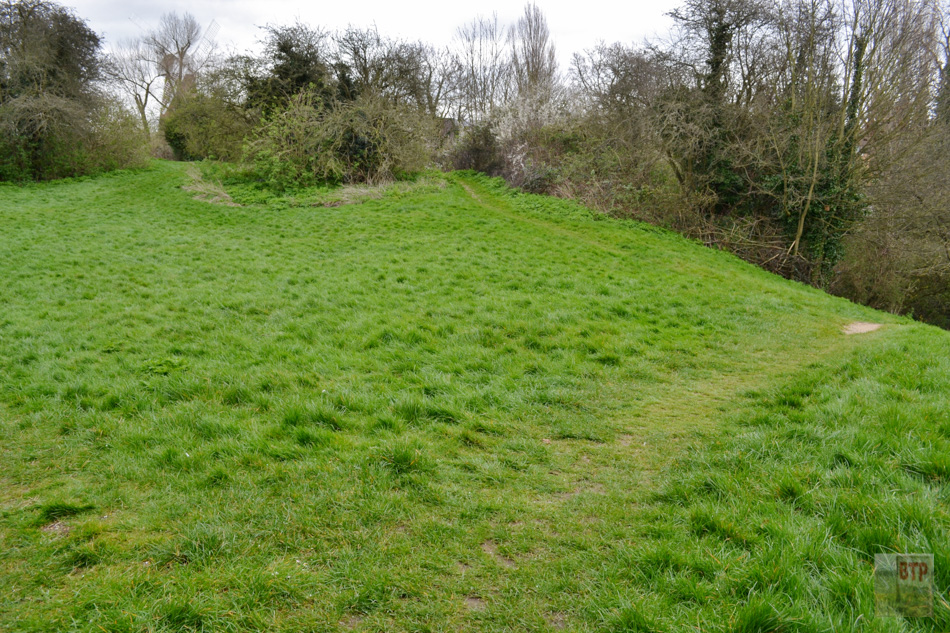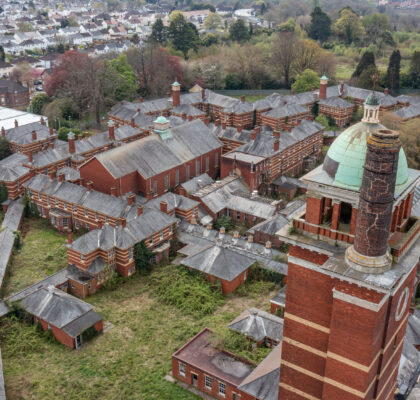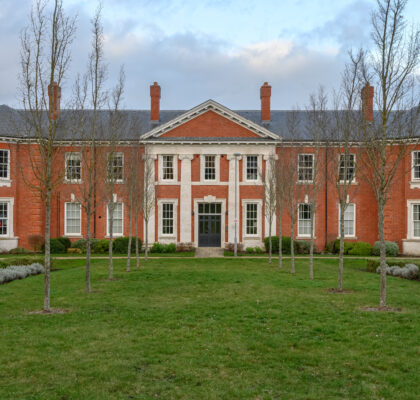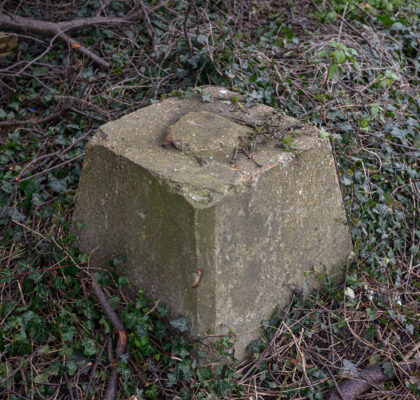What now stands as a strange overgrown mound of earth piling high into the sky, squeezed behind a car park near Rayleigh high street, was once the site of a Norman motte-and-bailey castle. Rayleigh Castle, or Rayleigh Mount as it is sometimes known, was recorded in the Domesday Survey of 1086 and was the only one in Essex. Hadleigh Castle; more conventional in design, was not built until the 13th Century. Rayleigh Castle however was of an earlier design style. The motte-and-bailey layout, like those at Pleshey and Ongar, consisted of a moated and enclosed and often raised courtyard area including everyday buildings such as a hall, kitchen, chapel, barracks, stables, and workshops. This was the bailey, and was the centre of the castle’s economic activity. Next to this was a much higher mound of earth; the motte, and this was often connected to the bailey via bridges over the moat or steps cut into its side. Atop this was the castle ‘tower’, or keep. This was often the only stone building on-site; the rest being timber, as would have been the case at Rayleigh. The two sections and moat are clearly visible to this day.
The Domesday book records that Swein, son of Norman lord Robert FitzWimarc, had the castle built on his manor. You may recognise the two local schools which still owe their names to these rulers. Swein was one of the wealthiest landowners in Essex after the Norman Conquest of 1066. Upon his death the castle was passed to his son Robert of Essex, and in turn his grandson Henry of Essex and around 1140 the motte was covered in stone rubble. Henry was accused of cowardice during battle in 1163 and was challenged to a duel, which he lost. His property; including the castle, was confiscated and became King Henry II’s property. King John later gave the castle to Hubert de Burgh around 1200 and it is thought that he used the stone rubble or keep to create Hadleigh Castle. In the late 13th Century, it is thought the castle grounds were used only as a pasture rather than for defence. In 1394, King Richard II allowed the residents of Rayleigh to use the foundation of the castle as a stone source, suggesting no other stone structures survived at this time. It eventually fell into use after hundreds of years of sheep-grazing. Since the grazing stopped, the site has become wooded as it remains today. The National Trust own the site today and it can be visited when it’s gates open – see here for exact times. It is still well-worth a visit considering only the mounds and moat can be seen. The information signs around the park show what sections served what purpose, and with a little imagination it really isn’t difficult to imagine the castle which once stood there.
Sources: British History Online, Wikipedia
This entry was posted in Location Report
